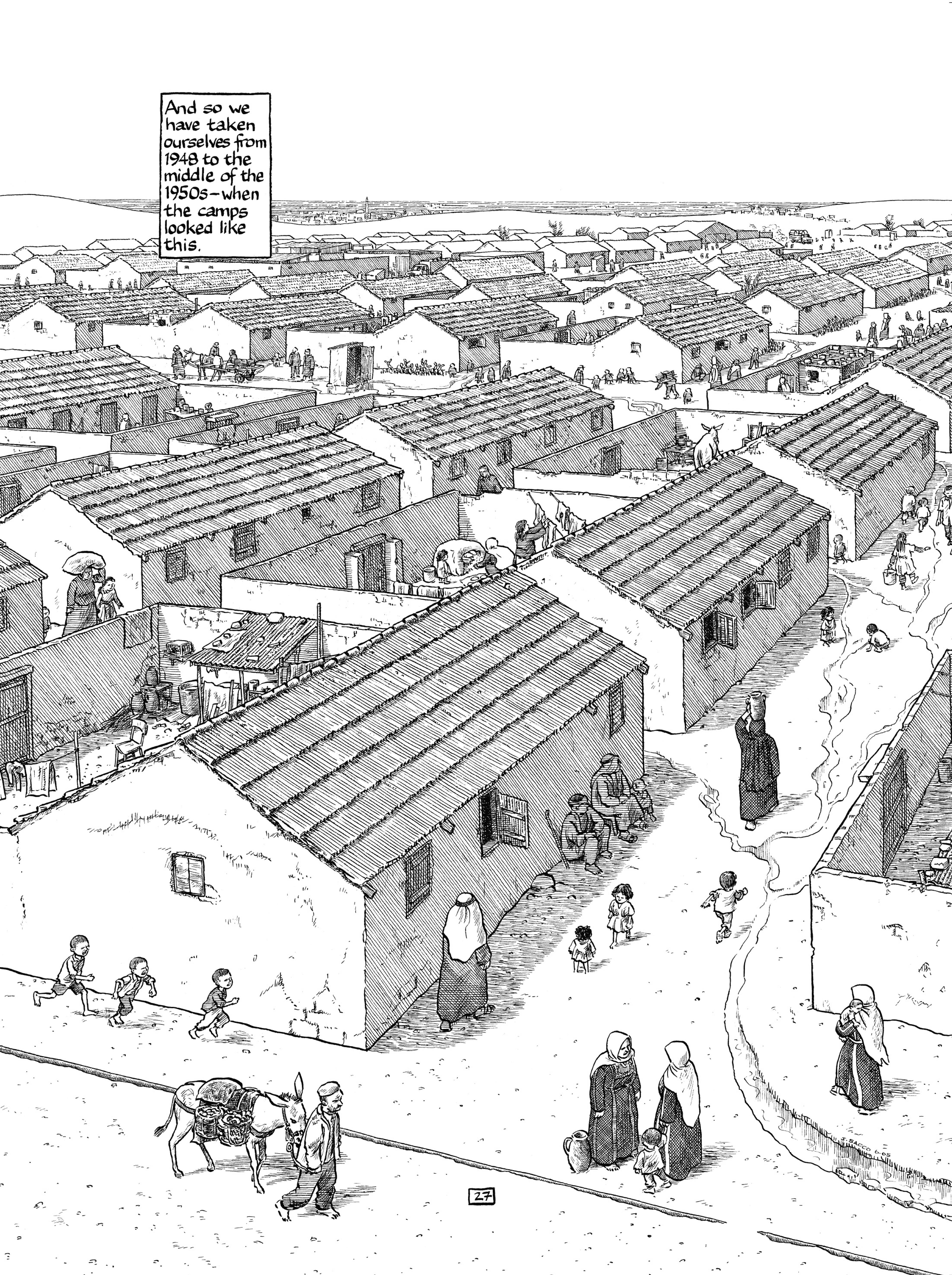
"I understood what I was about to draw": Joe Sacco on UNRWA Photography and the making of Footnotes in Gaza
One of the truly fascinating aspects of storytelling in comics form is the medium's capacity to transport readers to places and moments that belong in the past, but yet can be brought to life in verbal-visual narrative combining drawn images with testimony. In the event of this exhibition I enjoyed a brief conversation with the artist and journalist who has arguably contributed the most unforgettable examples of this to date: Joe Sacco, known for – among numerous books – the groundbreaking Palestine (originally published serially in the 1990s, and collectively in 2001) and the magisterial Footnotes in Gaza (2009).
In its painstaking engagement with a wealth of material – interviews, documents, photography – Footnotes in Gaza describes two massacres in Gaza in November 1956, interweaving these events with ongoing events in Rafah at the time the book was made. What many readers do not know, however, is that Sacco relied heavily on photographs from the UNRWA archives in Gaza City in reconstructing towns and camps in Gaza in the 1940s and 1950s on the page.
Reaching out to Sacco, who was busy preparing a visit to Malta – where he was born – last autumn,I asked if he could say a few words about how he worked with photographs as a source in making Footnotes in Gaza.
– Photographs, especially archival photographs, have been crucial in my own work, he says.
– I need to draw things that take place in the past. I need to know what towns and refugee camps looked like, what people wore, what sort of vehicles were around, and so on. Without a proper frame of reference, which old photos provide, I would be lost.
Sacco describes in the introduction of Footnotes in Gaza how the stories that are told are filtered through his visual interpretation, and how he thus came to be both "set designer and the director of every scene." The very act of recreation is indeed a major topic in the book itself, as is the fragility of memory and the burden of witnessing.
– Of course, in drawing the past I have to design and compose things imaginatively, but my imagination has to be informed by the reality of what things looked like, the journalist says.
– I have to be satisfied that I am not just making things up. So archival photos are one of my most important tools for getting things right.
Footnotes in Gaza is not only extensively researched, but also impressively composed, structured, and organized as a narrative, and among my favourite passages are those that dispense with panels and speech balloons and let landscapes open up across entire pages – as when we move from 1948 to the middle of the 1950s and then to the early 2000s, seeing Gaza transform before our eyes from page to page.
– I guess you were looking for specific things you needed in the photographs you consulted, but did you also come across things that would surprise you and affect your work in ways that were unexpected?
– Looking at old photos is a learning process, says Sacco.
– If there is a sense of surprise at what I'm seeing, it has to do with how much can change over time, even over a few dozen years. When I was in the Gaza Strip 2002 or so, I was in refugee camps that seemed like towns, with multi-story family dwelling and streets crammed with people and traffic. I had been in some of the same refugee camps only ten years before, and they had been much more ramshackle then. But to see photos of how the camps looked in the 1950s was astonishing. They were set up in a very orderly grid-like fashion, seemingly in the middle of nowhere, and all the housing units were single-story dwelling with enclosed yards. There was no traffic to speak of. Those archival photos were a godsend. Once I had them, I understood what I was about to draw.
Reprinted with permission from the author.
Reprinted with permission from the author.

